Before the 1990s and The Angel of the North, Tyneside was famed for coal, shipbuilding, football, Bigg Market bar crawls and scantily dressed revellers. Since the cessation of heavy industry, however, the region has been reinvented as a culture destination.
High-profile arts centres now front Gateshead’s once run-down waterfront, factories have been demolished or converted into galleries, studios and loft-style apartments, and the Diamond Strip is the new Bigg Market (that alone should tell you something). Football remains sacred, however, and drinkers have not taken to wearing coats in winter. The last two things are unlikely to change.
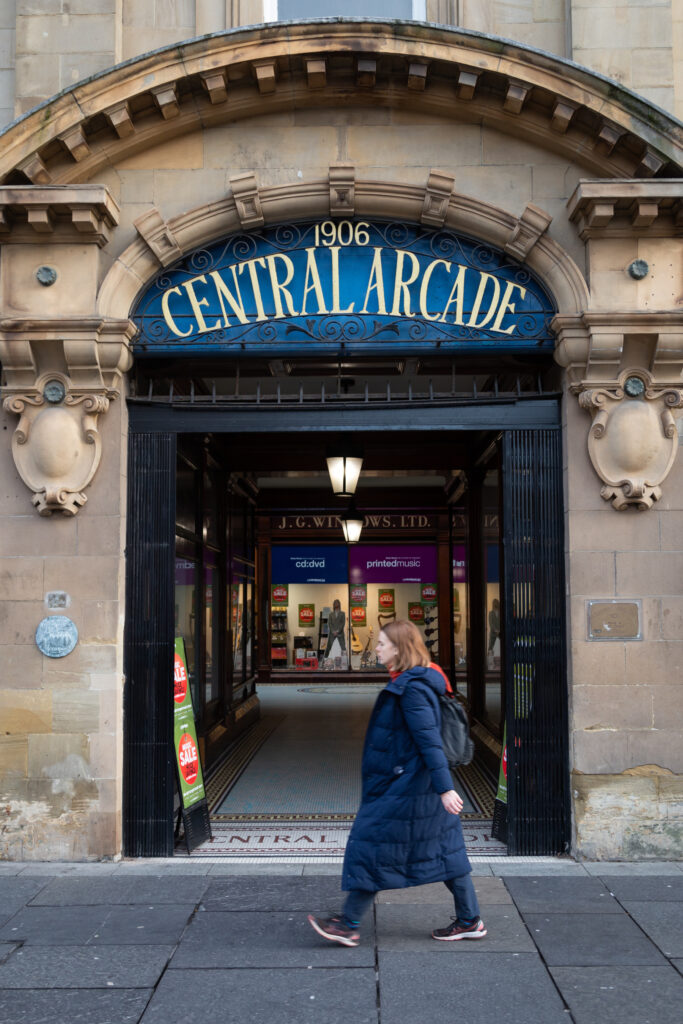
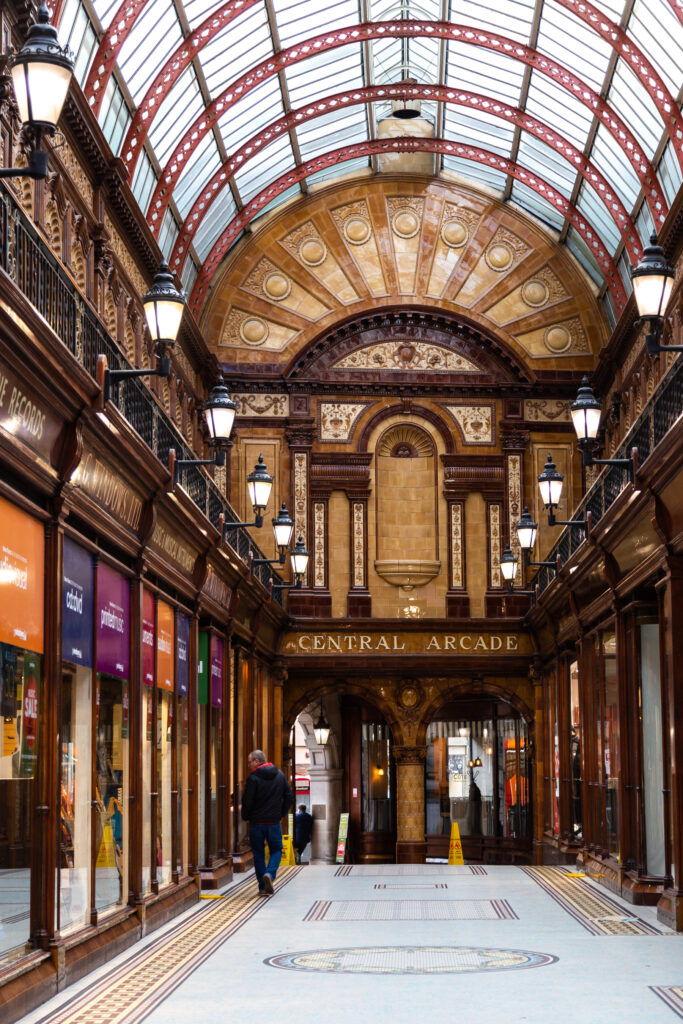
In the 19th century, seaside resorts developed around the mouth of the Tyne at places like Cullercoats and Tynemouth, providing a recreational space for Tynesiders to escape the city smoke. Then, as now, locals enjoyed a walk along the promenade, fish and chips, an ice cream and a dip in the sea. But things are changing around here: Tynemouth is more gentrified than ever (anyone for a monkfish tail wrap?) and developers are out at Whitley Bay restoring the promenade and seafacing Victorian terraces.
With myriad things to see and do throughout Tyneside’s main hubs – Newcastle, Gateshead and the nearby seaside resorts – we’ve picked out a handful of must-see highlights.
Newcastle
Grey’s Monument
Grey’s Monument marks the retail centre of Newcastle – and the heart of the city’s celebrated Grainger Town where there are more Georgian buildings than anywhere outside London and Bath. The most distinguished 400 yards of beautifully dressed sandstone in Newcastle is found on Grey Street – a wide Neoclassical boulevard that falls steeply away from Lord Grey’s fluted column towards the River Tyne.
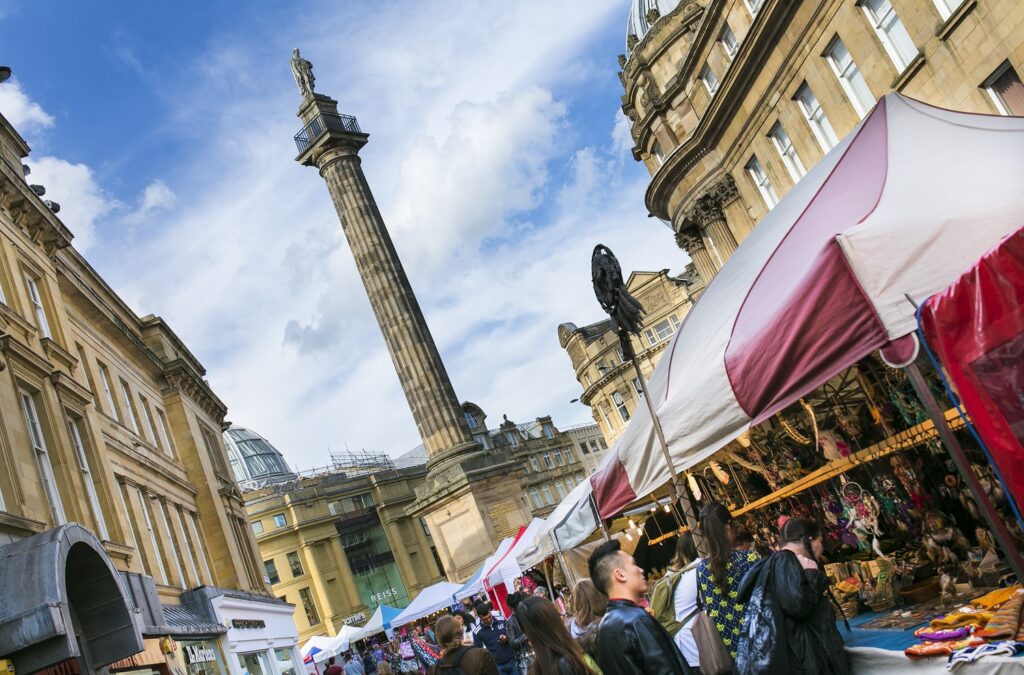
Clustered around Monument are the main shopping centres and streets and many of the city’s key attractions including the Theatre Royal, the regional home of the Royal Shakespeare Company, and the wonderfully restored Art-Deco Tyneside Cinema still with its original mosaic floor.
Grainger Market
This wonderful Victorian covered market is just a short stroll from Grey’s Monument. Those with a keen eye for relics will appreciate stalls including an original Marks & Spencer’s Penny Bazaar, still with its original 1895 frontage and decorative glass windows, and the Weigh House (still in operation).
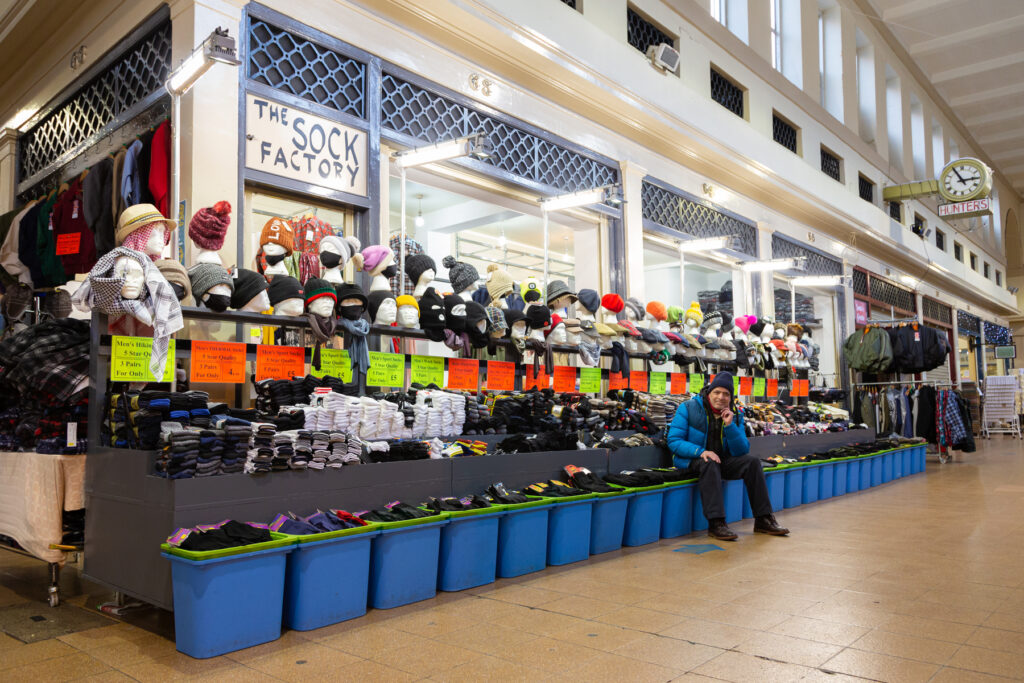
Not that long ago, the Grainger Market mainly specialised in cutprice clothes, secondhand records, groceries, good fishmongers and greasy spoon cafés, but it’s changing rapidly. You’ll still find stalls like ‘The Cheap Tab Shop’, but now it faces a health food store, and many of today’s shoppers are here to buy manchego cheese and sourdough bread.
Quayside
A stroll along the quayside from the Swing Bridge to the Millennium Bridge is recommended for the views of the city’s bridges and Gateshead’s acclaimed music centre and art gallery on the banks of the Tyne opposite.
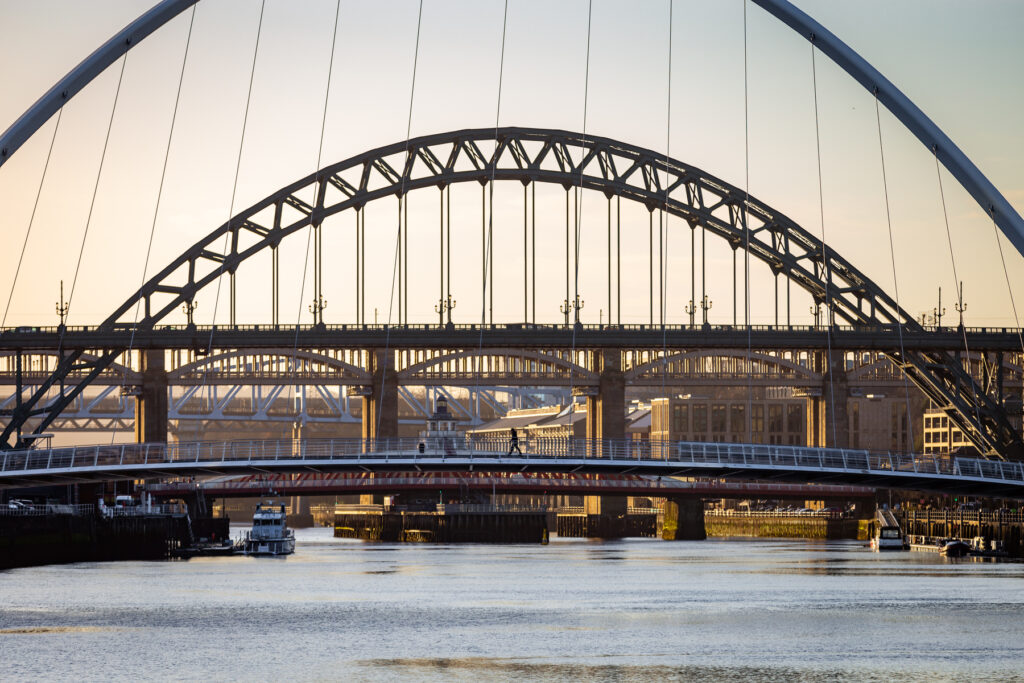
On Sundays, the quay plays host to the historic Quayside Market, a tradition that began in 1736. Pick up original artworks, secondhand books, jewellery, handmade beauty products, artisan breads and chocolates, and locally produced food.
Medieval Newcastle
Within bowshot of the Castle Keep is Newcastle’s medieval quarter, characterised by winding streets and alleys connecting the markets around the cathedral to the quayside. Cloth Market, Flesh Market, Groat Market and the Bigg Market (bigg was a type of barley) evoke a sense of what this area must have once looked (and smelled) like.
Newcastle gets its name from a ‘new’ timber castle built in 1080 by the son of William the Conqueror on the site of the old Roman fort, Pons Aelius. The wooden fortress was replaced a century later in stone and it is this later Norman building (well, its keep, mid 13th-century gateway and barbican at least) that still stand to this day.
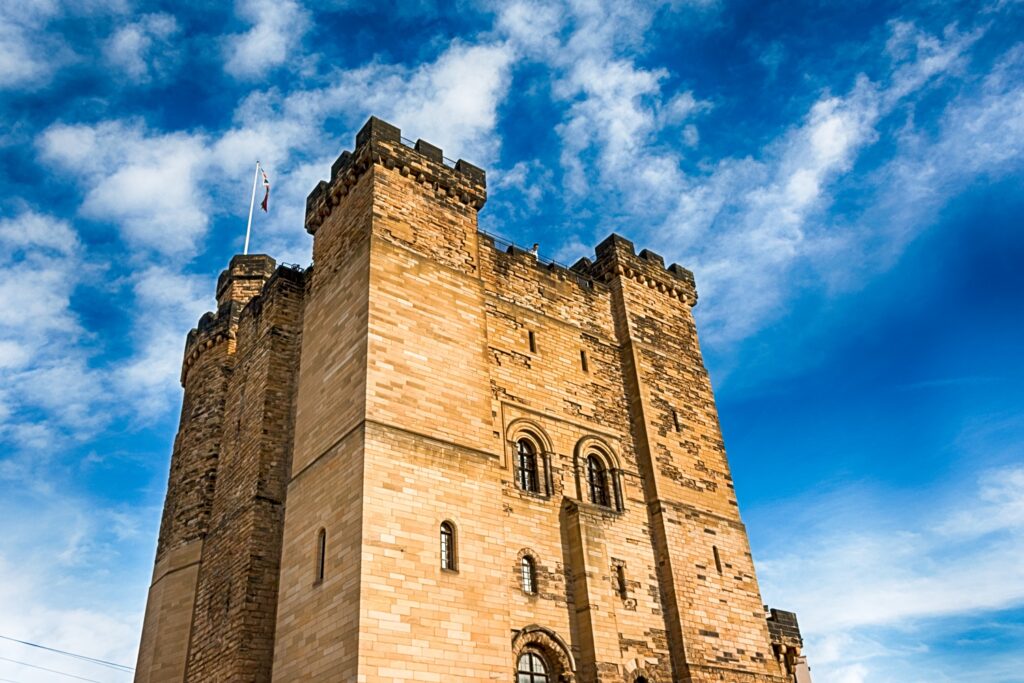
Inside, Newcastle Castle (formally the ‘Castle Keep’ in case you’re asking a local for directions) is a labyrinth of stone staircases that leads into many chambers including the Great Hall and up to the roof where you gain a stupendous view of Newcastle’s bridges. Downstairs, in a small museum, cabinets contain many curious objects discovered during excavations.
Just within the protective boundary of the West Walls is the restored 13th-century Blackfriars cloisters (now workshops and a restaurant) on Monk Street. The cloisters’ walkway is no longer covered but the building as a whole is worth seeking out and you can still see the outline of where the church once stood.
Gateshead
Traditionally the smaller, less glamorous cousin of Newcastle on the south side of the River Tyne, Gateshead has attracted national attention in recent decades for its daring contemporary architecture and arts venues – and made Newcastle sit up and take notice.
Rejuvenating Gateshead’s quayside began with the success of The Angel of the North on a hill outside of the town. Following Gormley’s 1998 masterpiece, the forward-thinking council embarked on a major redevelopment of the riverfront that put Gateshead on the arts map of Britain, though Newcastle often gets the credit.
Gateshead Quays
Gateshead’s quayside is now a major culture and leisure attraction sharing similarities with cities like Bilbao in Spain that also underwent arts-led regeneration works in the 1990s. Our Guggenheim equivalent is the Sage Gateshead music centre – a bulbous building wrapped in steel on a bank above the Tyne.
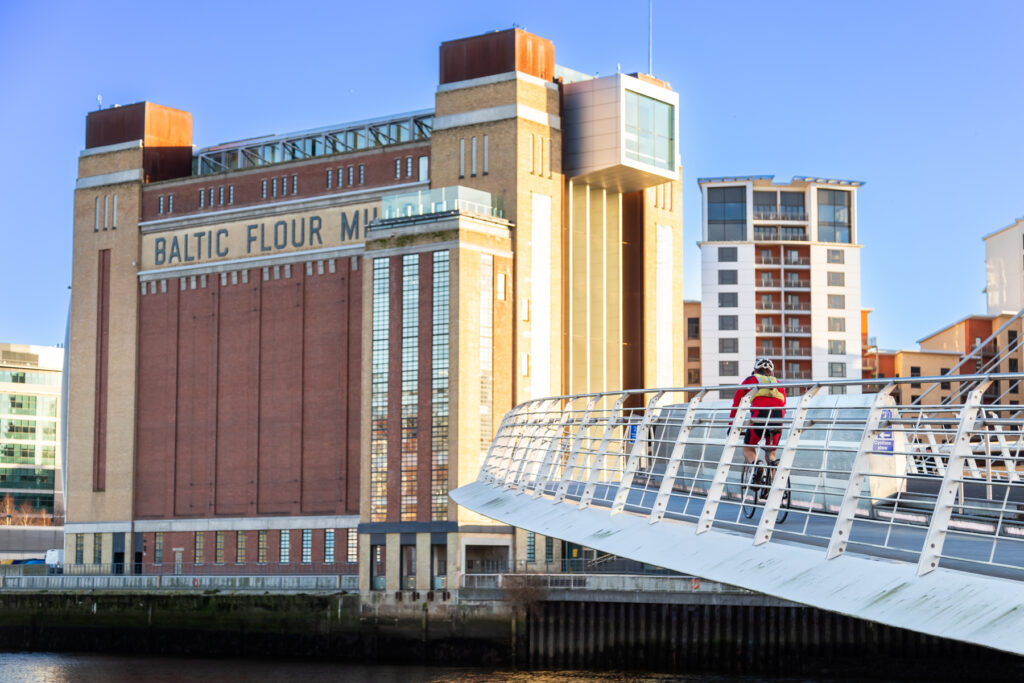
Inside, it’s airy, bright and voluminous and there’s a well-placed café with views of the Tyne Bridge and Newcastle’s waterfront. If you come to a concert here (mainly classical, folk, indie and world music), you’ll be able to appreciate the much-praised acoustics in the timber halls.
The BALTIC Centre for Contemporary Art started life in the mid 20th century as a flour mill before it was gutted and transformed into one of the premier modern art galleries in the UK. Over the years the Baltic has staged some superb exhibitions, including the Turner Prize and a couple of shows by the North’s favourite contemporary artists, Antony Gormley and Anish Kapoor, but for the most part it’s known for experimental art and large-scale installations. Even if you find such works inaccessible, it’s worth visiting for the views of the Tyne alone.
The Angel of the North
Boasting a wingspan the breadth of a jumbo jet was something of a PR disaster when the then-largest sculpture in Britain was unveiled in 1998. The Angel of the North was much criticised by locals who thought the 65-foot sculpture did indeed look like a plane and not the elegant, feminine form perhaps some had hoped for. Many residents hated the sculpture – really hated it – and wanted it taken down; but locals have come to love Antony Gormley’s rusty red masterpiece.
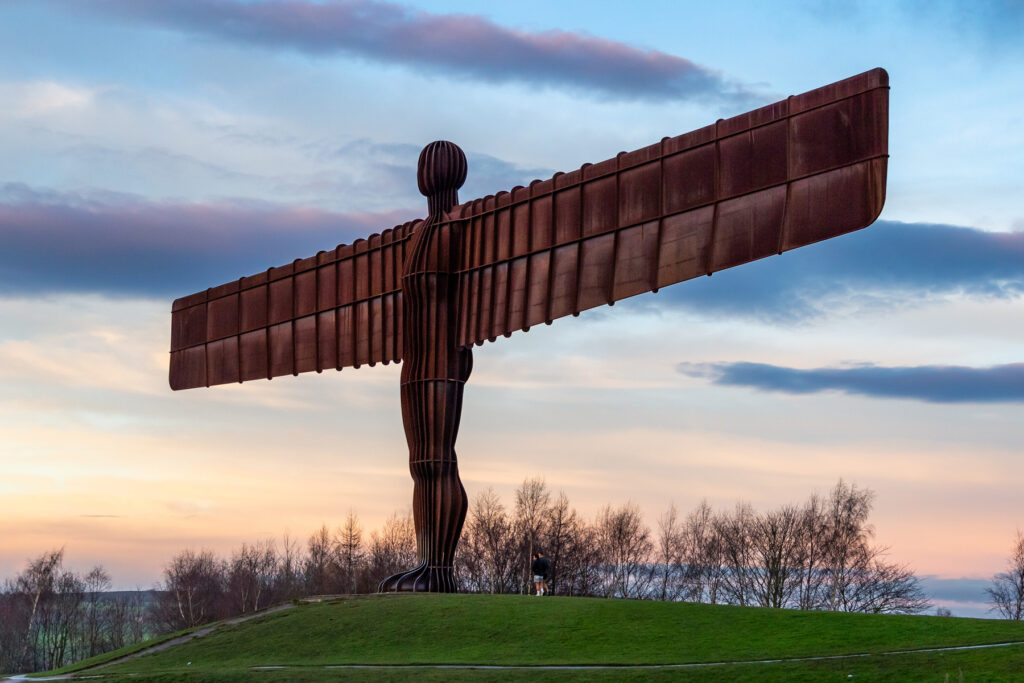
The prominent hillock on which it stands was once a colliery and the mining history of the site – and the region – is very much reflected in the colour, steel fabric and form (undeniably masculine). It’s said to be one of the most viewed pieces of public art in Britain, situated as it is by the A1 and in sight of the London to Edinburgh railway line. Other memorable sculptures around Gateshead include Sally Matthews’s life-size metal goats below the blue Metro Bridge and Cone by Andy Goldsworthy (west of the High Level Bridge).
Gibside
Once you set foot in this Georgian parkland on the outskirts of Gateshead, you will feel as cut off from the 21st century as you would on any remote National Trust estate. The grounds have all the grandeur you would expect of an 18th-century landscaped garden with eye-catching monuments, wooded walkways, classical architecture and open vistas.
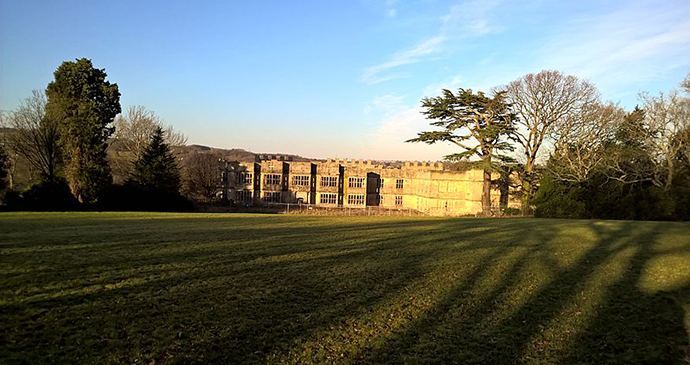
A stroll from the Palladian chapel along a half-mile tree-lined avenue to the 140-foot Column to Liberty is wonderfully romantic, especially in autumn when the intensity of light and colour is spectacular. The ruins of an orangery and Jacobean hall lie halfway between the two.
Don’t leave before visiting the restored walled kitchen garden dating to 1734. You can buy vegetables grown here at the regular farmers’ market on the first and third Saturday of every month. On Friday evenings throughout the year (and Saturdays in summer) the café becomes a ‘pub’ and the walled garden a beer garden where you can soak up the last rays of sunshine or cosy up beside log fire braziers with a pint of Wylam Brewery’s finest ale.
Tynemouth
The striking ruins of an 11th-century priory stand on a commanding rocky cape at the mouth of the River Tyne, looking across three sandy bays. Tynemouth’s vibrant, well-kept town centre with its cafés, bars, craft and antiques shops kneels behind, and stretched along the seafront are the grand Victorian houses for which the historic resort is celebrated. Heading north along the seafront, you’ll come to a Victorian model boating lake, aquarium and a surf shop.
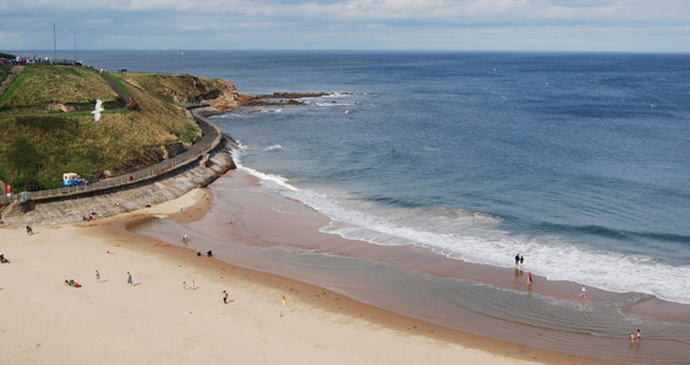
All three beaches are minutes away from the town centre. Longsands is the largest expanse of sand and is popular with families and surfers, who can hire surf boards and take lessons at the Tynemouth Surf Company.
More information
Hoping to find out more about Northumberland? Check out our Slow Travel guide: